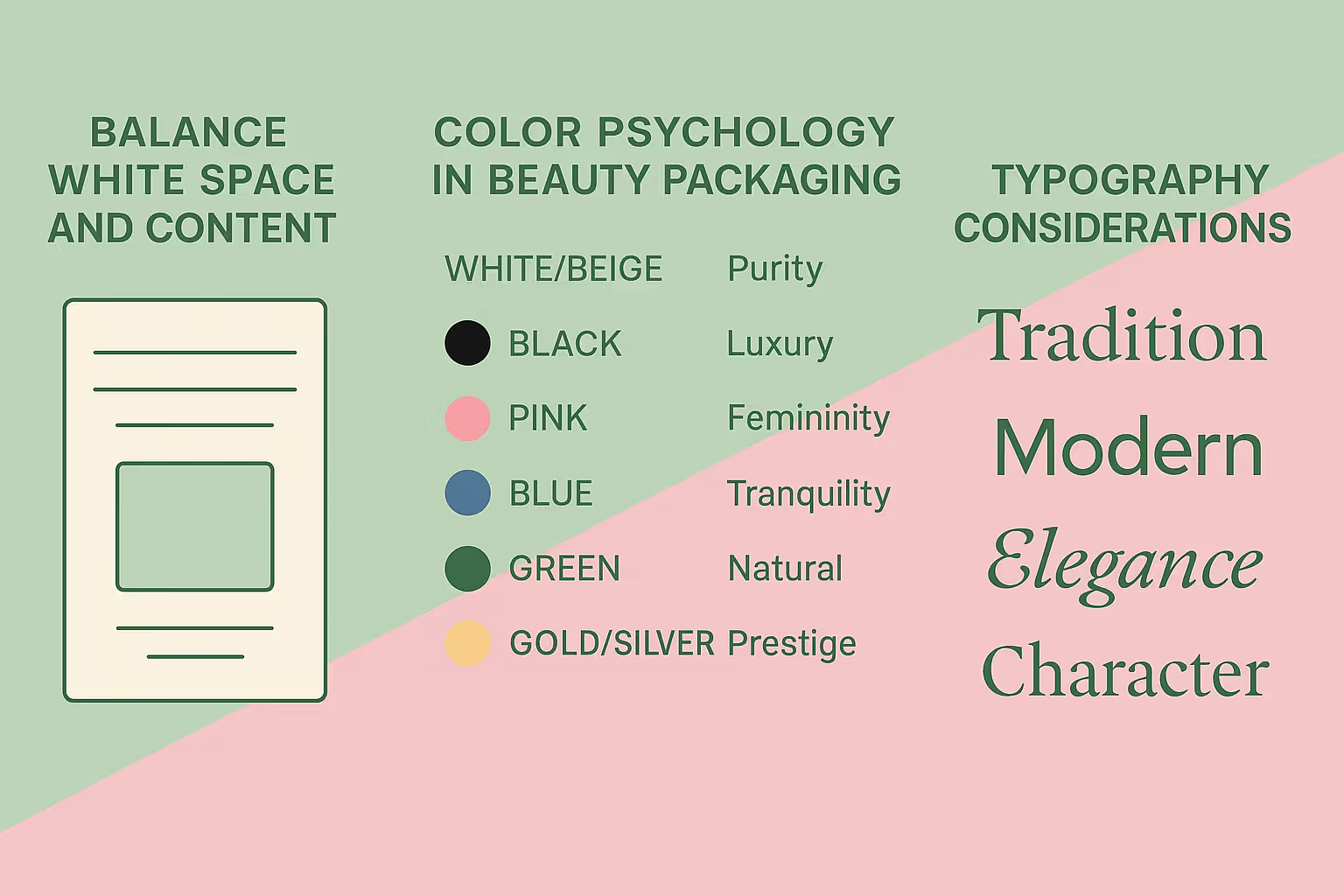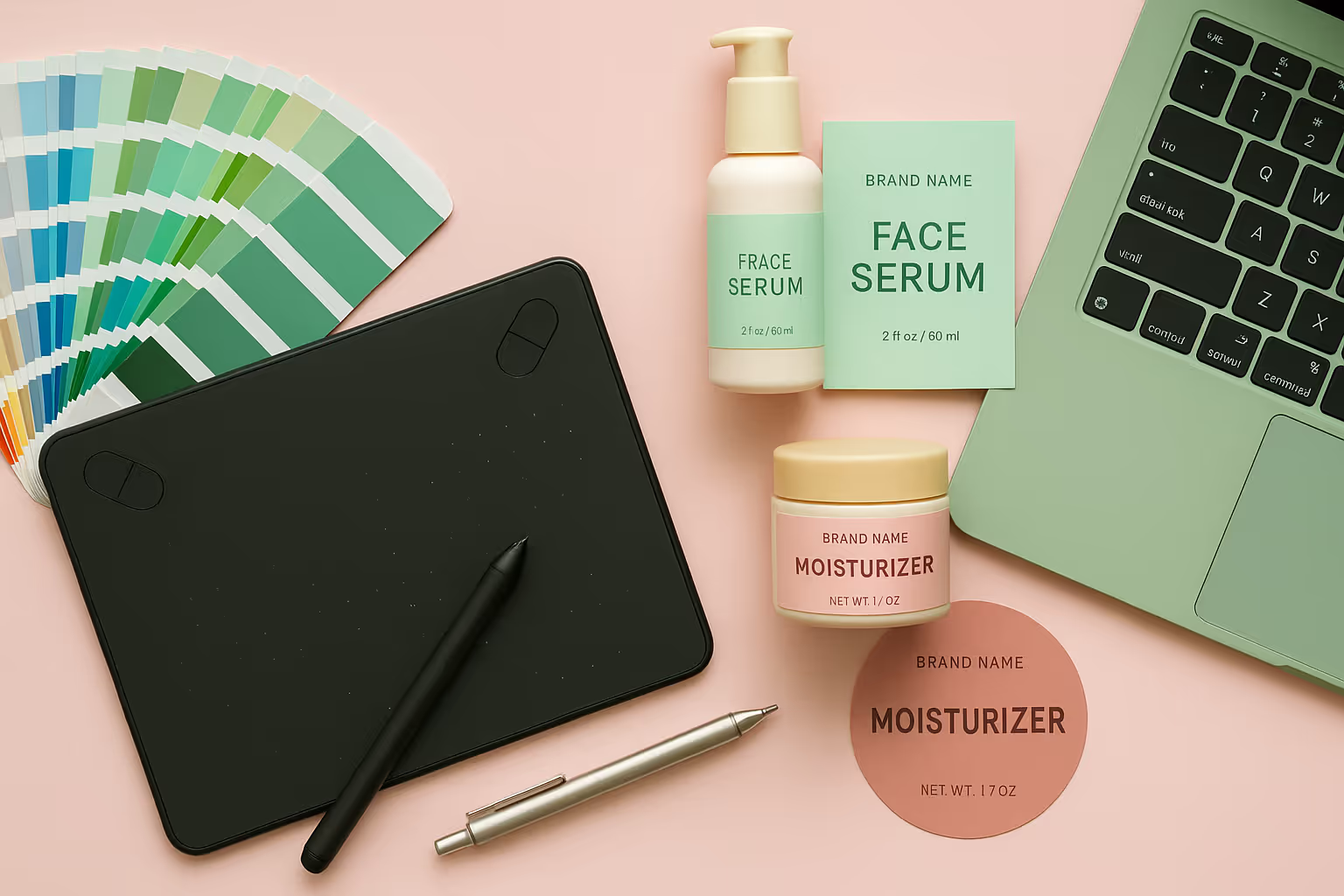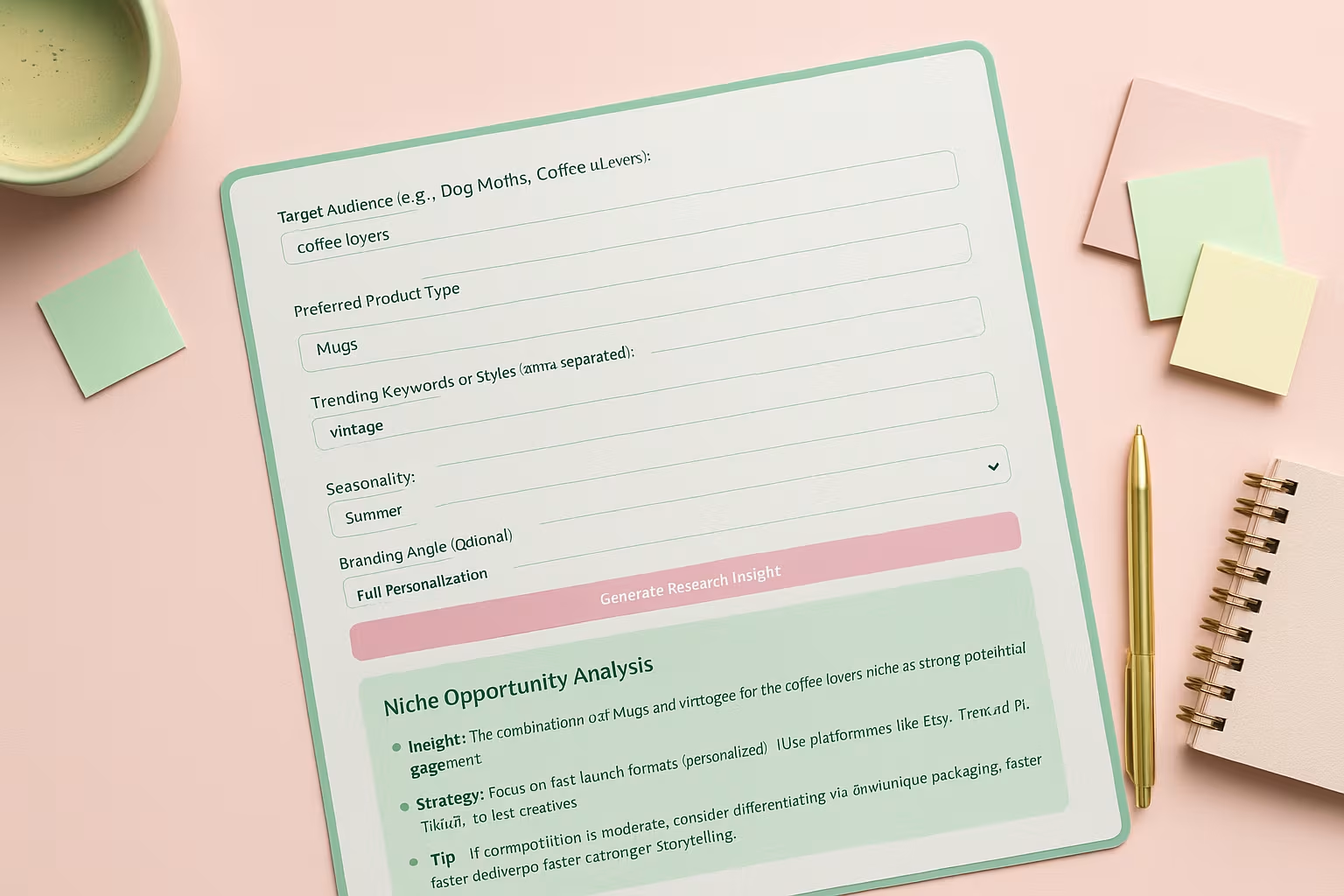How to Design a Good Label for Your Cosmetics Products: A Complete Step-by-Step Process

Creating the perfect label for your cosmetic products is key to brand success. With over 30,000 beauty brands worldwide, standing out is a design challenge. Your label must tell your story, attract buyers, and inspire trust. In a crowded market, smart design is your edge.
Knowing how to design a good label for your cosmetics products ensures every detail works for you. From layout to compliance, strong labels drive conversions. First impressions matter; your packaging can make or break the sale.
Designing Your Cosmetics Label in 4 Easy Steps
Creating an effective cosmetic label involves multiple stages, from concept to final production. Here's a systematic approach to ensure your labels hit the mark:
Step 1: Research Your Target Market and Competition
Before designing anything, understand who you're selling to and what they respond to:
- Analyze competitor products in your niche
- Identify design trends in your specific category (skincare, makeup, etc.)
- Study the preferences of your target demographic
- Note what attracts you to certain products as a consumer
This research provides valuable insights into what works in your market segment while helping you identify opportunities to differentiate your brand.
Step 2: Define Your Brand's Visual Identity
Your label should be a natural extension of your overall brand identity:
- Establish a consistent color palette (typically 2-3 primary colors)
- Select typography that reflects your brand personality (modern, classic, luxurious, etc.)
- Determine the appropriate tone for your messaging (scientific, playful, minimalist)
- Decide on visual elements that will appear across product lines
For inspiration, explore different beauty brand logos to understand how successful companies visually communicate their values and positioning.
Step 3: Choose the Right Label Materials and Finish
The physical properties of your label significantly impact perceived value:
Material options:
- Paper (matte, glossy, textured)
- Clear or white film
- Metallic substrates
- Eco-friendly alternatives
Finishing techniques:
- Embossing/debossing
- Foil stamping
- Spot UV coating
- Matte/gloss combinations
The material and finish should align with your product positioning. Luxury products typically feature premium finishes like foil stamping or textured papers, while natural/organic brands often opt for kraft paper or minimal, eco-friendly materials.
Step 4: Create a Hierarchy of Information
Not all information on your label carries equal weight. Establish a clear hierarchy to guide the consumer's eye:
- Primary focus - Brand name and product name
- Secondary focus - Key benefits or unique selling proposition
- Tertiary information - Product details, directions, ingredients
- Required but less prominent - Regulatory information, barcodes
This hierarchy helps consumers quickly understand what your product is and why they should choose it over competitors.
Design Principles for Cosmetic Labels

When designing your cosmetic product labels, certain principles will help ensure they're effective at capturing attention and conveying information:
Balance White Space and Content
White space (negative space) is crucial for readability and perceived quality:
- Avoid cluttering the label with too much text or imagery
- Create breathing room around important elements
- Use white space strategically to direct attention
Many emerging brands make the mistake of filling every available space, which can make the label look unprofessional and overwhelm the consumer.
Color Psychology in Beauty Packaging
Colors evoke specific emotions and associations, which is particularly important in the beauty industry:
- White/Beige - Purity, simplicity, and cleanliness (ideal for natural or sensitive skin products)
- Black - Luxury, sophistication, and premium quality
- Pink - Femininity, youth, and playfulness
- Blue - Tranquility, reliability, and science-backed formulas
- Green - Natural, organic, and environmentally friendly
- Gold/Silver - Prestige, luxury, and high-end positioning
Your color choices should align with both your brand identity and the specific product benefits. For example, a detoxifying charcoal mask might use black as a primary color to emphasize its key ingredient.
Typography Considerations
Font selection dramatically impacts how consumers perceive your product:
- Limit yourself to 2-3 complementary fonts per label
- Ensure readability at various sizes
- Consider the emotional qualities of different typefaces:
- Serif fonts (like Times New Roman) convey tradition and reliability
- Sans-serif fonts (like Helvetica) feel modern and clean
- Script fonts suggest elegance and luxury
- Display fonts can create distinctive characters, but should be used sparingly
Pro tip: Test your label typography by viewing it at the actual printed size and from the distance a shopper would typically see it on a shelf. If key information isn't immediately legible, reconsider your font choices or sizing.
Special Considerations for Different Cosmetic Categories
Different types of cosmetic products have unique labeling needs and conventions:
Skincare Product Labels
Skincare labels often emphasize ingredients and benefits:
- Highlight key active ingredients prominently
- Consider using minimalist designs that convey purity
- Include benefit statements related to skin concerns
- Emphasize scientific credibility when applicable
For in-depth inspiration on creating effective skincare packaging, explore these skincare label design ideas that balance aesthetic appeal with clear communication of benefits.
Makeup Product Labels
Makeup labels typically focus on color accuracy and application information:
- Include color indicators that match the product inside
- Consider window cutouts for products where seeing the actual shade is important
- Use imagery that demonstrates the finished look
- Highlight performance benefits (long-lasting, waterproof, etc.)
Hair Care Product Labels
Hair care labels should visually communicate the expected results:
- Use imagery that shows healthy, beautiful hair
- Emphasize hair type compatibility
- Highlight key benefits (volume, smoothing, repair)
- Consider ergonomic label shapes that work well in shower environments
Testing Your Cosmetic Label Designs
Before finalizing your labels, thorough testing is essential:
Digital Mockups and Physical Prototypes
- Create digital mockups showing your label on the actual product container
- Print physical prototypes at actual size and apply them to sample containers
- Evaluate how the label looks from different angles and distances
- Check how the design appears in different lighting conditions
Consumer Feedback
- Gather opinions from your target demographic
- Conduct A/B testing when possible
- Ask specific questions about clarity, appeal, and information hierarchy
- Use feedback to refine your design before final production
Working with Professional Designers vs. DIY Options

You have several paths to creating your cosmetic labels:
Professional Design Services
Working with experienced designers offers several advantages:
- Expert knowledge of beauty industry conventions
- Technical expertise with printing requirements
- Creative solutions based on extensive experience
- Professional results that elevate brand perception
Professional design services range from freelance designers to specialized packaging design agencies.
DIY Label Design Tools
For brands on a budget, several tools make professional-looking labels more accessible:
- Template-based design platforms like Canva or Adobe Express
- Label-specific design software
- Online label printing services with built-in design tools
If you're taking the DIY route, learn how to make your labels for products while still achieving a professional look.
Label Production and Printing
Once your design is finalized, you'll need to choose a printing method:
- Digital printing (ideal for smaller quantities and detailed designs)
- Flexographic printing (cost-effective for larger runs)
- Screen printing (for simple designs with few colors)
- Offset printing (high quality for large quantities)
Work with your printer to understand minimum order quantities, turnaround times, and file preparation requirements.
Optimizing Labels for Your Sales Channels
Different sales environments have unique requirements for effective labeling:
E-commerce Considerations
When selling online, your product images become the primary way shoppers experience your labels:
- Ensure key information is visible in thumbnail images
- Consider how your label photographs under different lighting
- Design with social media sharing in mind
- Include QR codes linking to additional product information
Retail Display Effectiveness
For products sold in physical retail:
- Test visibility from typical shelf viewing distances
- Consider how your products look when grouped together
- Design with shelf impact in mind
- Ensure your brand is recognizable from several feet away
Creating a Consistent Label System for Product Lines
As your cosmetic brand grows, you'll likely expand beyond a single product. Planning for this from the beginning ensures a cohesive brand presentation:
- Develop a template system that works across different product categories
- Create distinctive but related designs for different product lines
- Establish color coding for different product types or benefits
- Maintain consistent placement of brand elements across all products
A unified approach helps build brand recognition while allowing customers to easily identify specific products within your range.
Advanced Labeling Insight: Use Light-Reflective Finishes to Guide Buyer Focus
Seasoned beauty brands often use targeted reflective finishes like selective foil or gloss, not just for aesthetics but to guide the buyer’s eye across the label.
By applying these finishes only to key elements like benefit claims (“Anti-Aging,” “Hydrating Complex”), you can subtly direct attention and boost shelf impact without overwhelming the design.
This technique is especially effective in competitive settings where products have just a few seconds to stand out. It’s a high-level tactic that balances sophistication with function, something most new cosmetic entrepreneurs overlook.
Turn Your Cosmetic Label Into a Powerful Sales Tool
A well-designed cosmetic label does more than identify your product, it drives sales and builds brand loyalty.
By combining compliance, storytelling, and smart design, your label can connect directly with your audience.
It’s often the first physical touchpoint with your brand, so make it count. Focus on clear messaging, visual appeal, and meaningful detail.
The information provided in this article is meant for general informational purposes only and should not be considered as professional or legal advice. We do not guarantee the completeness, accuracy, reliability, or suitability of the information in this article. We strongly recommend seeking professional guidance that suits your individual circumstances.
FAQ
Related blogs

Print on Demand Niche Research Tool: Find High-Intent Audiences Worth Designing For




